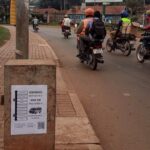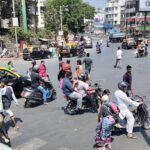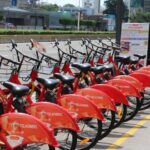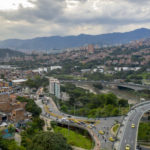Posts tagged with 'urban mobility planning'
Do informal transport networks in African cities provide equitable services for everyone that needs them? Unsurprisingly, the answer is often no. Operators frequently prefer to drive the safest and most central routes, inadvertently prioritizing commuters traveling to formal jobs in ...

Since the mid-2010s, cities around the globe have witnessed the explosion of free-floating electric bikes, mopeds and scooters on their streets. NUMO, the New Urban Mobility alliance, began tracking this phenomenon in 2019 with the New Mobility Atlas. Between 2019 and ...

Although it is widely recognized that gender disparities are echoed in the design and operation of urban transportation systems, gender-responsive transportation planning is still in its early stages. Drawing from the TOPUK project, which stands for “Women Accessing Public Transport,” ...

In March 2023, the White House announced its federal budget, including funding for a groundbreaking initiative: the Active Transportation Infrastructure Investment Program (ATIIP). The program is unlike anything the U.S. has supported in the past as it will provide matching ...

Most people in India walk – to work, to the market or to the railway station. According to the 2011 Indian census, 48% of people walk or cycle to work every day compared to the less than 3% of people ...

Public transport is a powerful tool to curb climate emissions and to reduce dependence on private motorized vehicles – not to mention to provide more equitable and affordable access to opportunity for riders. But surprisingly few countries have made public transport part ...

In 2015, the chairman of a Kampala administrative zone about 10 kilometers (6 miles) from the city’s downtown addressed a hand-written note to the chairman of a minibus taxi association. He humbly requested the group of drivers expand its services ...

The coronavirus pandemic hit public transport hard. Global ridership tanked initially by as much as 80%, and transit was still at around just 20% of pre-pandemic ridership at the end of 2020. There is serious concern that people will increasingly opt for private vehicles, should public ...

They marched for human rights, for health care and education, but they came for the metro system, burning and damaging more than 86 stations across the city. Massive protests in Santiago last October forced the government to agree to rewrite ...

In the midst of COVID-19 precautions that have curtailed movement around the world, Colombia has released a new national road map for urban and regional mobility. It sends a powerful policy message that cities are saved by providing adequate access ...

When you think about how to build more resilient cities, does transportation come to mind? Whether we realize it or not, mobility – the choices we make to get where we need to go – is top of mind every ...

Uber, Lyft, Didi, Ola, Grab, Via, Chariot, Bridj, car2go, Zipcar, Lime, Jump… The list of companies offering new ways to get around – and new business models to access and pay for it – is long and only getting longer. ...

Like many Indian cities, Pune’s population exploded over the last three decades. Between 1981 and 2011 it more than doubled as thousands came to work in manufacturing and IT. And like other cities, Pune expanded, eventually engulfing 23 previously separate ...

As the year comes to an end, Urban Stories explores the emerging trends, key decisions and major changes on the horizon for cities around the world in 2017. With a new installment each day from India, Brazil and Washington, D.C., our ...

Transforming Transportation (#TTDC15) is the annual conference co-organized by EMBARQ, the sustainable urban transport arm of the World Resources Institute’s (WRI) WRI Ross Center for Sustainable Cities, and the World Bank. This year’s conference focuses on Smart Cities for Shared Prosperity, and takes place on ...
























